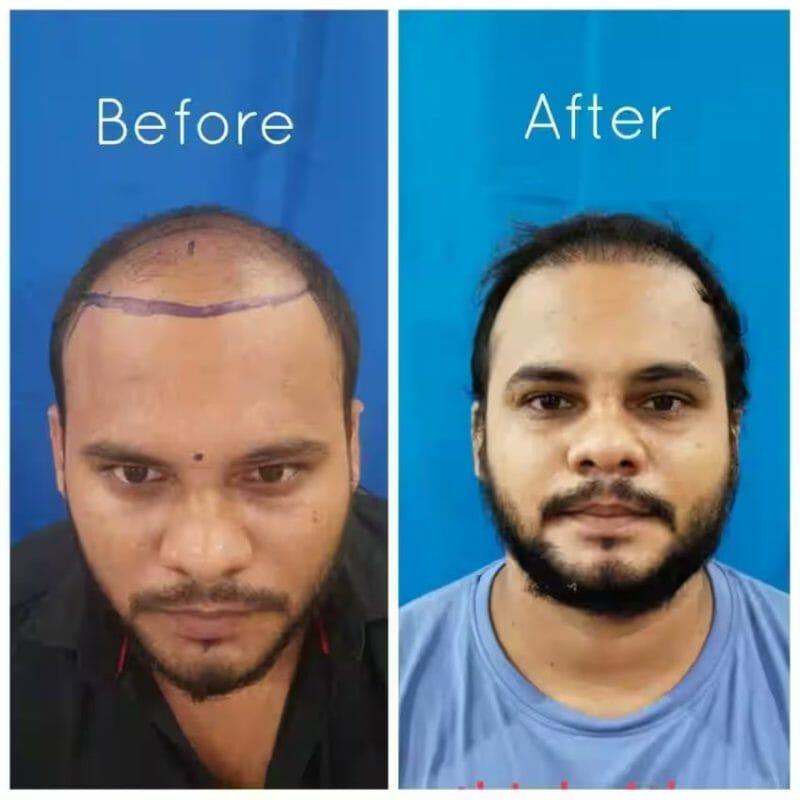Hair loss can significantly impact an individual’s confidence and self-esteem. While various treatments are available to address this concern, Platelet-Rich Fibrin (PRF) therapy has emerged as a promising solution for hair restoration. This article will explore the concept of PRF treatment for hair loss, understanding its mechanism, benefits, and potential outcomes. Whether you’re a high school student or seeking effective hair restoration options, this comprehensive guide will provide insights into PRF treatment and its role in naturally revitalising hair.
Moreover, it will focus on the relevance of PRF treatment in the context of hair transplant in Perth, the vibrant capital city of Western Australia, known for its excellent healthcare facilities and scenic beauty. Located on the picturesque western coast of Australia, Perth is a cosmopolitan city known for its stunning beaches, vibrant cultural scene, and thriving economy.
With over 2 million people, Perth offers a rich blend of modern amenities and a laid-back lifestyle. The city boasts a robust healthcare infrastructure, including renowned clinics and hospitals specializing in hair transplant procedures. The city’s commitment to excellence in healthcare ensures that individuals receive top-notch treatment and support throughout their hair restoration journey.
What Is PRF Therapy:
Platelet-Rich Fibrin (PRF) therapy is a regenerative treatment that utilises a patient’s blood to stimulate hair follicle rejuvenation. The process involves drawing a small amount of blood from the individual and then spinning it in a centrifuge to separate the platelet-rich fibrin matrix. This matrix, rich in growth factors and regenerative proteins, is injected into the scalp to promote growth and improve hair density. PRF therapy harnesses the body’s natural healing properties to stimulate hair follicles, offering a safe and effective solution for hair restoration.
The Science Behind PRF Treatment:
PRF treatment harnesses the power of platelets and growth factors to stimulate cellular processes necessary for hair follicle rejuvenation. Platelets play a crucial role in tissue regeneration by releasing growth factors like platelet-derived growth factor (PDGF), transforming growth factor (TGF), and vascular endothelial growth factor (VEGF). When these growth factors are injected into the scalp, they activate dormant hair follicles, promote angiogenesis (blood vessel formation), and stimulate collagen production and new hair strands. This intricate interplay of growth factors and cellular responses creates an optimal hair growth and rejuvenation environment.
Advantages of PRF Treatment:
PRF treatment offers several advantages for individuals seeking hair restoration. Unlike synthetic products, PRF therapy utilises the patient’s blood, minimising the risk of adverse reactions or allergies. The growth factors present in PRF stimulate hair growth and improve the overall quality and thickness of the hair. PRF treatment is a non-surgical and minimally invasive procedure, making it a safe and convenient option for individuals looking for natural hair restoration. These advantages make PRF therapy attractive for those seeking effective and natural hair rejuvenation.
The PRF Treatment Process:
The PRF treatment process involves several steps to ensure optimal results. After collecting the blood, it undergoes centrifugation to separate the platelet-rich fibrin matrix from other blood components. The resulting PRF is then carefully injected into the scalp using fine needles. The treatment duration and number of sessions may vary depending on the individual’s specific needs and the severity of hair loss. Regular follow-up appointments and maintenance sessions may be recommended to achieve the desired outcomes. This personalised approach ensures that the PRF treatment is tailored to each individual’s unique requirements, maximising the therapy’s effectiveness.
Expected Outcomes and Results:
PRF treatment offers a gradual but noticeable improvement in hair growth and density. It is essential to have realistic expectations, as individual results may vary. Some individuals may experience visible hair growth within a few weeks, while others may require several months to observe significant changes. Consistency with the recommended treatment plan and following post-treatment care instructions can optimise the outcomes of PRF therapy. Understanding the expected outcomes and timeline is crucial for individuals undergoing PRF treatment, allowing them to monitor progress and stay motivated throughout the process.
Considerations and Consultation:
Before considering PRF treatment, consulting with a qualified healthcare professional or a hair restoration specialist is essential. They will evaluate the individual’s specific hair loss condition, assess suitability for PRF treatment, and provide personalised recommendations. Understanding the potential benefits, risks, and expected outcomes is crucial in making an informed decision about PRF therapy as a hair restoration option. By seeking guidance from experienced professionals, individuals can understand the treatment process and its suitability for their unique needs, ensuring that they confidently embark on their hair restoration journey.
Conclusion:
PRF treatment offers a natural and effective solution for individuals seeking hair restoration. By utilising the regenerative power of platelets and growth factors, PRF therapy stimulates hair follicles, promotes angiogenesis, and enhances hair growth. The advantages of PRF treatment, such as its safety, naturalness, and convenience, make it a desirable option for individuals experiencing hair loss. In the context of hair transplant in Perth, PRF treatment is a valuable adjunct to optimise the procedure’s success and promote the overall satisfaction of individuals seeking hair restoration. By incorporating PRF therapy into their treatment protocols, hair transplant clinics in Perth provide a comprehensive and cutting-edge approach to address hair loss concerns. With PRF treatment and the expertise of hair transplant clinics in Perth, individuals can regain their confidence, embrace natural hair rejuvenation, and enjoy long-lasting, natural-looking results.


